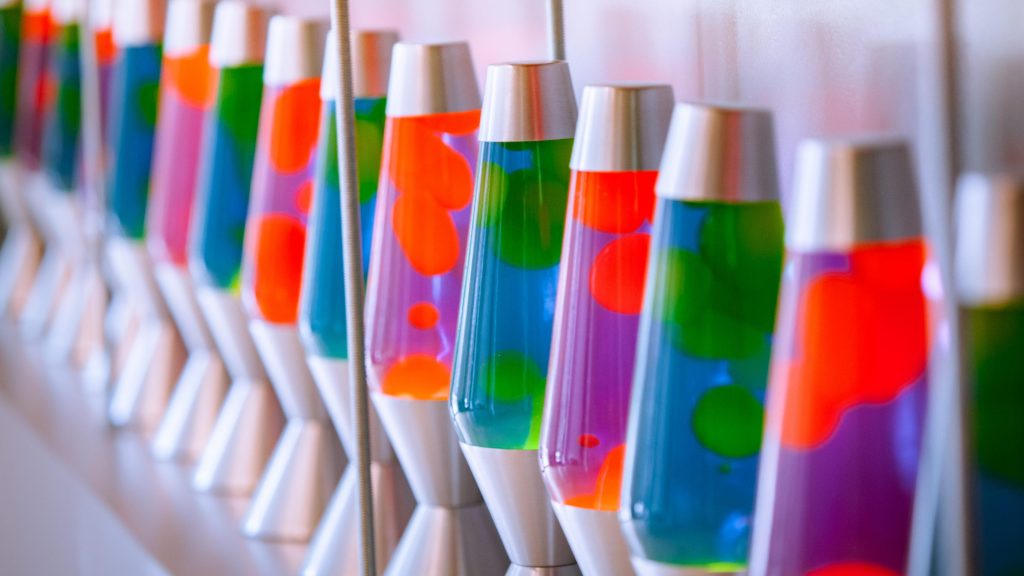Post Bump
Posted: September 3, 2019 Filed under: Uncategorized Leave a comment »I am bumping up Robin Edigar-Seto’s post about his final project. Robin is my classmate, and not only do I love him dearly, but I was intrigued by his making/editing process and how he arrived at his final product. His method of connecting with memory and storytelling is compelling.
previous project reflection
Posted: September 3, 2019 Filed under: Uncategorized Leave a comment »Reflection on the Magic Window
Posted: September 3, 2019 Filed under: Uncategorized Leave a comment »https://dems.asc.ohio-state.edu/?p=1735(opens in a new tab)
I’m bumping this project because I’m fascinated by the technical feat she has achieved. The way the buttermilk-coated window produces a dreamlike quality while with the projected image is an amazing sight to see.
Previous Project Bump
Posted: September 3, 2019 Filed under: Uncategorized Leave a comment »I chose Claire Melbourne’s Horse Bird Muffin Cycles to draw attention to. This use of Isadora to allow an audience member to interact, move and even dance while still maintaining some level of agency and creativity presents an environment in which the audience IS the dance while somehow not being too vulnerable. I’m always interested in that space between putting an audience member on the spot and allowing for interaction and creativity to be at the forefront.
Reflection on previous project
Posted: September 2, 2019 Filed under: Uncategorized Leave a comment »Files for Isadora 01 lesson in class
Posted: August 27, 2019 Filed under: Uncategorized Leave a comment »https://osu.box.com/s/d5zqvc25h2fugpfupy8ub8f4bbm1ek8f
READINGS For 2019
Posted: August 22, 2019 Filed under: Uncategorized Leave a comment »https://osu.box.com/s/nea44rnmgerzull43fb7x0pd3i9von5a
In search of randomness
Posted: August 20, 2019 Filed under: Uncategorized Leave a comment »A delightful solution to a hard problem:
https://qz.com/1642628/cloudflare-uses-lava-lamps-to-generate-a-crucial-resource/
Final Project
Posted: December 14, 2018 Filed under: Uncategorized 1 Comment »For my final project I wanted to create an experience that was playful, interactive, tricky , and physically engaging. Thus, a life-size version of candy land emerged on my Isadora patch. Though I had a loose idea of how I envisioned the game to function when I began the project, it quickly grew beyond my original construct in to something far more complex.
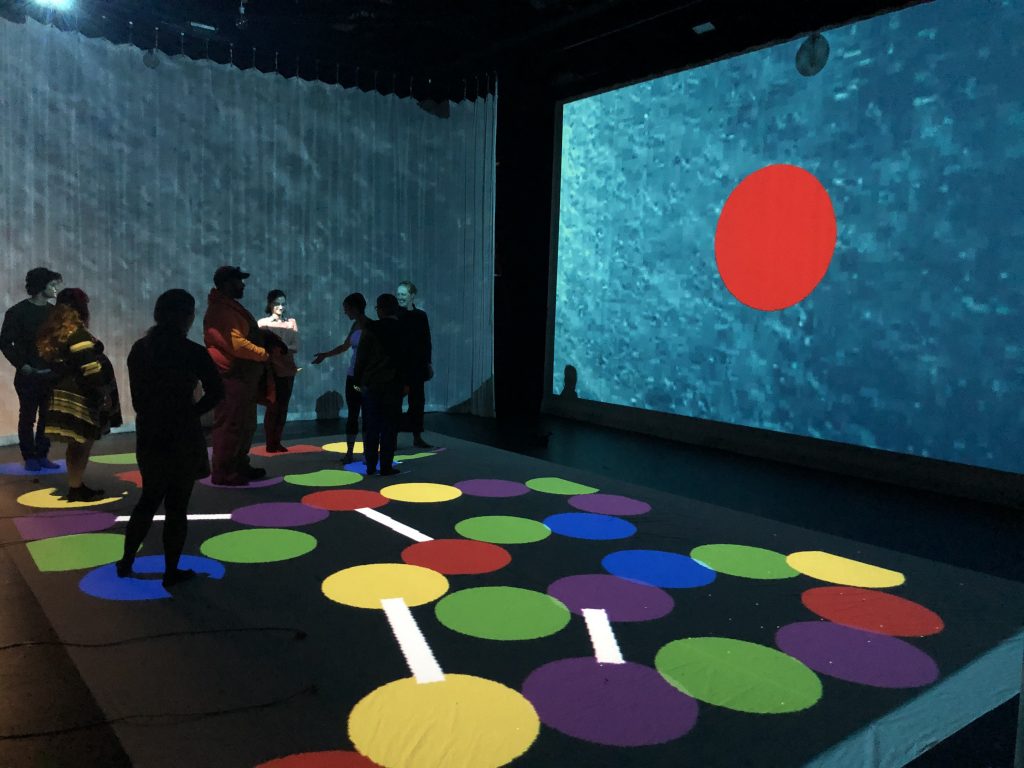
The game begins with the players “picking a card” by pressing a button on a wii remote. The button then sends an osc message to my patch that triggers a random colored dot. This colored dot is then projected on to the main screen, signaling the player to move forward to that color dot.
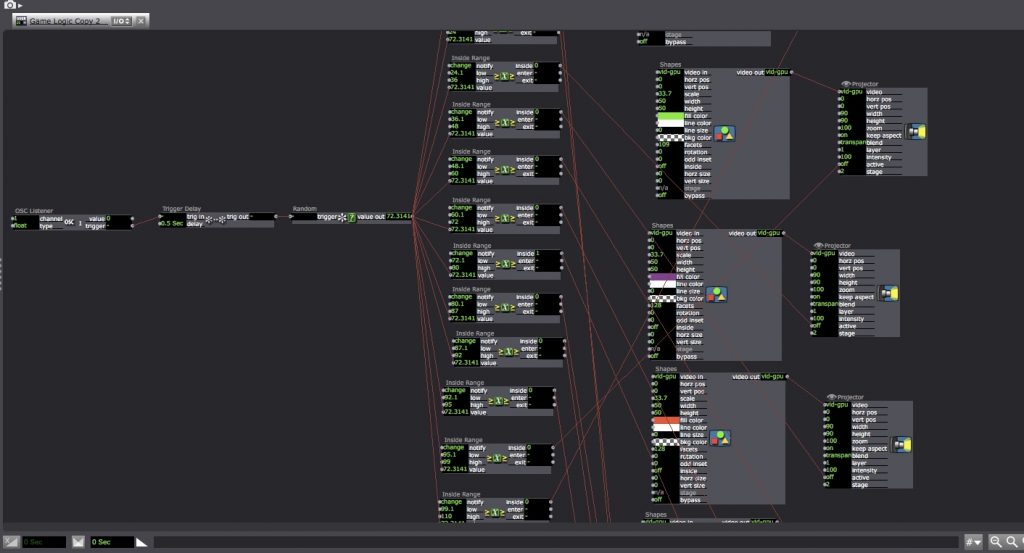
I used a random number generator actor to pick a number to land in one of 12 inside range actors. Each of the 12 inside range actors either activated a shapes actor to project a colored dot on the screen or a jump actor to jump to a “special card”.
The special cards I chose to incorporate were the licorice card (freeze for one turn), the lollypop woods card (travel to the spiraling shape on the game board), the chocolate swamp(return to the start of the board game), and my personal favorite, the gooey gumdrop card.
The gooey gumdrop card instructed the player to pick up a wand and tap the gooey gumdrops in the snow below. This section of the game allowed me to incorporate my new comfortability with makey makeys. I created the gumdrops and the wand from aluminum foil and then painted them to fit the scene. I think this card added an element of adrenaline to the game and a higher level of physicality because the players had to find the gumdrops, bend to their level to tap them, and get them all before time ran out.
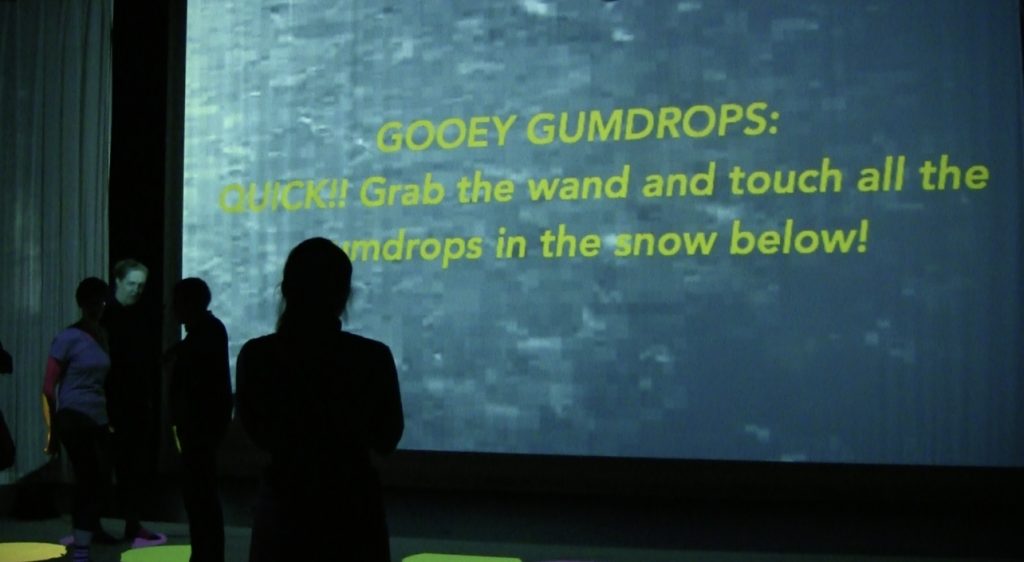
Like all projects, a few challenges arose in creating my Isadora patch. However, I was able to workshop the issues and within the problem solving I realized how much my Isadora competency has grown over the semester. I feel very comfortable with the program and I am proud of the logic I have grasped.
As a whole, I think that all of the players enjoyed themselves and had a fun time reconnecting with this childhood classic board game. I had a blast creating it and would love to recreate more board games in the future.
Final Project – Werewolf
Posted: December 14, 2018 Filed under: Final Project, Uncategorized Leave a comment »For this final project, many aspects changed over its development. Initially, I started work on a voting sort of game. I wanted everyone experiencing to have an app loaded to their mobile device written in ReactNative, then proceed to each have an interface to participate in the game. Essentially I would find through research that I wanted to create what is known as a Crowd Game.
Further reading: http://stalhandske.dk/Crowd_Game_Design.pdf
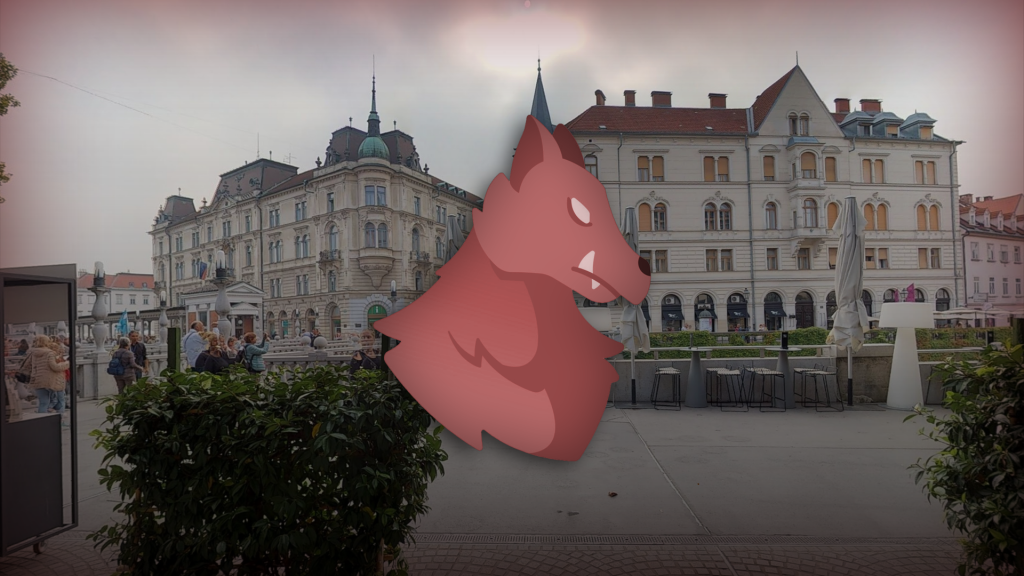
Through much of my development time, I worked with the concept of a voting game and how to get people to form coalitions. Ultimately, I found it difficult to design something around this concept, because it was difficult to evoke strong emotions without serious content or without just having the experience revolve around collecting points. Shortly before the final few days of development, I had the idea to completely change and base the experience on the party game known as Mafia or Werewolf (Rules example: https://www.playwerewolf.co/rules/). This change better reflected my original desire to have a Crowd Game, but with added intimacy and interaction between the players themselves, as opposed to with the technology. If people are together to play a game, it should leverage the fact that the people are together.
Client / Mobile App
– Written in React.js (JavaScript) using the ReactNative and Expo Frameworks. Excellent choice for development, written in a common web language for Android and iOS, able to access system camera, vibration, etc. https://facebook.github.io/react-native/ https://expo.io/
– Unique client ID. Game Client would scan and display QR codes so players can select players to kill automatically from distance with consensus. Also randomly assigns all rolls to players.
– Expo allowed me to upload code to their site and load it to any device. A website serving HTML/JS would be easier to use if one did not intend to use all the phone functions.
– This part of development went smoothly and was fairly predictable with regard to time sink. Would recommend for use.
Isadora
– Isadora patch ran in the Motion Lab. Easy to setup after learning software in class.
– Night/Day cycle for the game with 3 projectors.
LAN Wi-Fi Router
– Ran from laptop connected to Server over ethernet. Ideal for setups with need for high speed/traffic.
Game Server
– Written in Java, by far the most taxing part of the project.
– Contains game logic, handling rounds, players, etc.
– Connects to clients via WebSockets with the Jetty library. I could get individual connections up and running, but it became a roadblock to using the system during a performance because I could not fix the one-to-many server out-messages.
– This had a very high learning curve for me, and I would recommend that someone use a ready system like Colyseus for short-term projects like this final. http://colyseus.io/ https://github.com/gamestdio/colyseus
During the final performance, I only used the game rules and Isadora system setup in the Motion Lab, but I feel as though people really enjoyed playing. Certainly more effective than the first game iteration I had, even with the technology fully working. My greatest takeaway and advice I would give to anyone starting a project like this, would be to just get your hands dirty. The sooner you fully immerse yourself in the process, the sooner you can begin to see all it could be.
